-
 Bitcoin
Bitcoin $115100
-2.99% -
 Ethereum
Ethereum $3642
-1.38% -
 XRP
XRP $3.027
-5.51% -
 Tether USDt
Tether USDt $1.000
-0.05% -
 BNB
BNB $763.4
-1.32% -
 Solana
Solana $177.2
-5.42% -
 USDC
USDC $0.9999
-0.02% -
 Dogecoin
Dogecoin $0.2247
-6.47% -
 TRON
TRON $0.3135
0.23% -
 Cardano
Cardano $0.7824
-4.46% -
 Hyperliquid
Hyperliquid $42.53
-0.97% -
 Stellar
Stellar $0.4096
-6.09% -
 Sui
Sui $3.662
-2.61% -
 Chainlink
Chainlink $17.63
-3.57% -
 Bitcoin Cash
Bitcoin Cash $536.3
2.94% -
 Hedera
Hedera $0.2450
0.34% -
 Avalanche
Avalanche $23.23
-3.15% -
 Litecoin
Litecoin $112.2
-1.23% -
 UNUS SED LEO
UNUS SED LEO $8.976
-0.30% -
 Shiba Inu
Shiba Inu $0.00001341
-2.72% -
 Toncoin
Toncoin $3.101
-2.44% -
 Ethena USDe
Ethena USDe $1.001
-0.05% -
 Uniswap
Uniswap $10.08
-1.97% -
 Polkadot
Polkadot $3.938
-2.77% -
 Monero
Monero $323.9
0.87% -
 Dai
Dai $0.9999
-0.02% -
 Bitget Token
Bitget Token $4.481
-1.69% -
 Pepe
Pepe $0.00001199
-5.94% -
 Aave
Aave $288.2
-0.68% -
 Cronos
Cronos $0.1279
0.36%
How to find the VWAP of a cryptocurrency?
VWAP helps crypto traders gauge fair trade prices by factoring in volume and price, guiding decisions on entry, exit, and market sentiment.
Jul 16, 2025 at 01:14 am
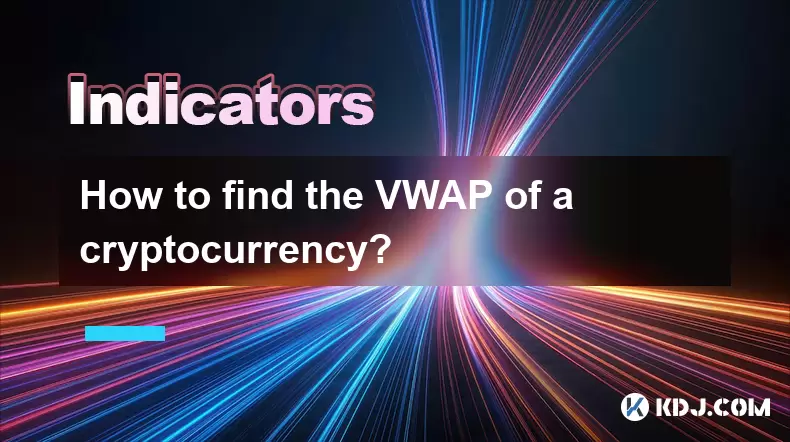
Understanding What VWAP Means in Cryptocurrency Trading
VWAP, or Volume Weighted Average Price, is a crucial metric used by traders to determine the average price of a cryptocurrency over a specific time period, factoring in both volume and price. Unlike simple moving averages that only consider price, VWAP gives more weight to periods where trading volume is higher, making it a more accurate reflection of market sentiment.
In the context of cryptocurrencies, where volatility can be extreme and order books fluctuate rapidly, VWAP becomes an essential tool for institutional and retail traders alike. It helps identify potential support and resistance levels and serves as a benchmark for executing trades at fair prices.
How VWAP Is Calculated for Cryptocurrencies
The formula for calculating VWAP involves two main components: price and volume. Here's how you do it step-by-step:
Determine the typical price for each interval
This is calculated using the formula:$$ \text{Typical Price} = \frac{\text{High} + \text{Low} + \text{Close}}{3} $$
Multiply the typical price by the volume for that interval
This gives the Price × Volume value for each time period.Accumulate the Price × Volume values over the chosen time frame
Accumulate the total volume over the same time frame
Divide the cumulative Price × Volume by the cumulative volume
The final result is the VWAP for that time period.
This calculation resets at the start of each new trading session, which is typically daily for most crypto exchanges.
Using Trading Platforms That Offer VWAP Indicators
Many modern cryptocurrency trading platforms integrate VWAP indicators directly into their charting tools, making it easy for users to visualize this metric without manual calculations.
TradingView
One of the most popular platforms among crypto traders, TradingView offers a built-in VWAP indicator under its public scripts section. Users can simply add it to their charts and customize parameters like reset intervals.Binance and other major exchanges
While native exchange interfaces may not always show VWAP by default, third-party integrations or API-based tools can overlay VWAP lines on exchange-specific charts.Custom script integration
Advanced users can use Pine Script (on TradingView) or Python-based tools to create custom VWAP visualizations tailored to their trading strategy.
Make sure the platform you choose supports intraday data and allows customization of the VWAP reset period, especially if you're tracking assets with high volatility.
Manual Calculation Using Historical Data
For those who prefer full control over their data or are developing algorithmic trading strategies, manually computing VWAP from historical candlestick data is an option.
Here’s how you can proceed:
Download historical candlestick data
Most exchanges offer APIs or CSV exports containing OHLC (Open, High, Low, Close) and volume data.Organize the data in a spreadsheet or data analysis tool
Tools like Excel or Google Sheets can handle this efficiently.Calculate the Typical Price for each candle
Use the formula mentioned earlier.Multiply each candle’s Typical Price by its corresponding volume
Create cumulative sums of both the TP×V and volume columns
Divide the cumulative TP×V by the cumulative volume to get VWAP per row
This method allows deep backtesting of VWAP-based strategies and is often used by quantitative traders in the crypto space.
Integrating VWAP Into Your Trading Strategy
Once you’ve obtained VWAP values, whether through automated tools or manual computation, integrating them into your trading decisions can significantly enhance performance.
Use VWAP as a dynamic support/resistance level
When the price is above VWAP, it suggests bullish momentum; when below, bearish sentiment may dominate.Compare current price with VWAP to assess trade fairness
If you're entering a large position, checking against VWAP ensures you’re getting a reasonable average price.Combine VWAP with other indicators like EMA or RSI
This multi-layered approach can help confirm signals and reduce false positives.Set alerts based on VWAP crossovers
Many platforms allow setting alerts when price crosses above or below the VWAP line, helping automate entry/exit points.
Avoid relying solely on VWAP for decision-making; instead, treat it as one component of a broader analytical framework.
Frequently Asked Questions (FAQs)
Q1: Can I use VWAP for all types of cryptocurrencies?
Yes, VWAP can be applied to any cryptocurrency that has sufficient trading volume and historical data available. However, for very low-volume altcoins, the accuracy of VWAP may be compromised due to sparse data points.
Q2: Does VWAP work better on certain timeframes?
VWAP performs best on intraday charts such as 1-minute, 5-minute, or 15-minute intervals, especially for scalping or day trading. Longer timeframes like daily or weekly charts may still use VWAP but tend to smooth out short-term fluctuations.
Q3: Is there a difference between VWAP and Moving VWAP?
Yes, standard VWAP resets at the beginning of each session, while Moving VWAP recalculates continuously over a rolling window, similar to a moving average. This distinction affects how signals are interpreted.
Q4: How often should I recalculate VWAP during the trading day?
VWAP should be recalculated with every new candlestick, particularly when working with real-time trading. Most platforms handle this automatically, updating the line dynamically as new data comes in.
Disclaimer:info@kdj.com
The information provided is not trading advice. kdj.com does not assume any responsibility for any investments made based on the information provided in this article. Cryptocurrencies are highly volatile and it is highly recommended that you invest with caution after thorough research!
If you believe that the content used on this website infringes your copyright, please contact us immediately (info@kdj.com) and we will delete it promptly.
- Crypto ETFs: Analyzing the 2025 Boom and Beyond
- 2025-07-26 00:30:12
- Bitcoin Swift (BTC3): Last Call for Presale Stage 1!
- 2025-07-25 23:10:12
- Altcoins of the Decade: Unearthing the Top 3 Crypto Titans
- 2025-07-25 23:50:11
- Bitcoin, Presales, and Crypto Buys: What's Hot in the NYC Crypto Scene?
- 2025-07-25 23:50:11
- BlockDAG, LINK, and Uniswap: Navigating the Crypto Landscape with Real-World Utility
- 2025-07-25 23:55:12
- Tyre Legalities and the 20p Coin Test: What Motoring Experts Want You to Know
- 2025-07-25 23:55:12
Related knowledge
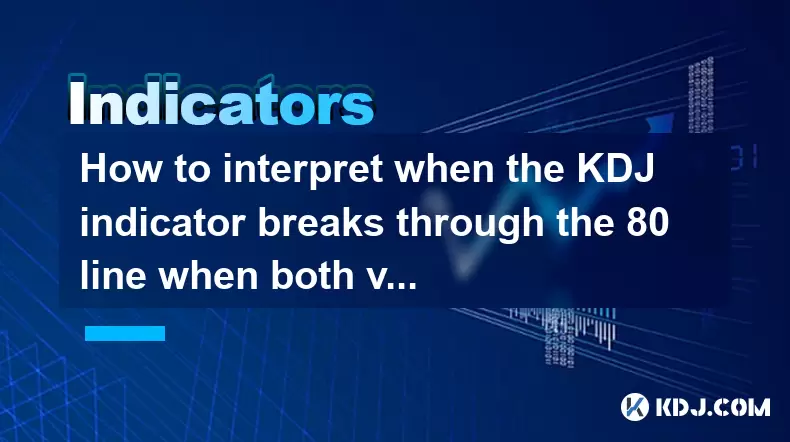
How to interpret when the KDJ indicator breaks through the 80 line when both volume and price rise?
Jul 26,2025 at 12:47am
Understanding the KDJ Indicator and Its ComponentsThe KDJ indicator is a momentum oscillator widely used in technical analysis within the cryptocurren...
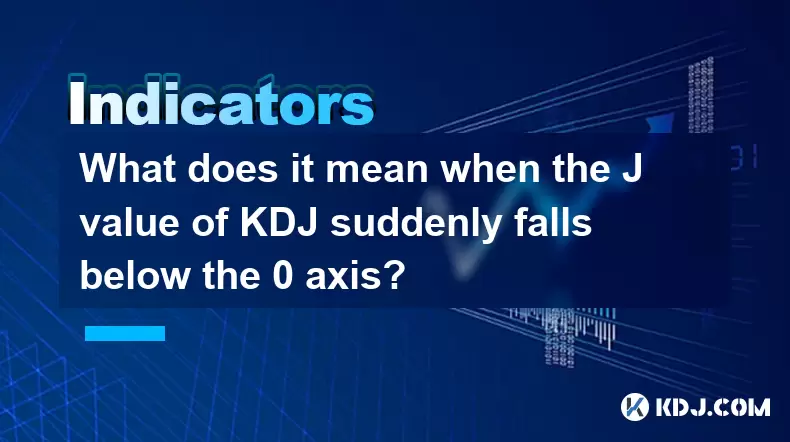
What does it mean when the J value of KDJ suddenly falls below the 0 axis?
Jul 26,2025 at 12:01am
Understanding the KDJ Indicator in Cryptocurrency TradingThe KDJ indicator is a momentum oscillator widely used in cryptocurrency trading to identify ...

How to interpret that the KDJ D line is downward for a long time but the price is sideways?
Jul 25,2025 at 07:00pm
Understanding the KDJ Indicator and Its ComponentsThe KDJ indicator is a momentum oscillator widely used in cryptocurrency trading to assess overbough...
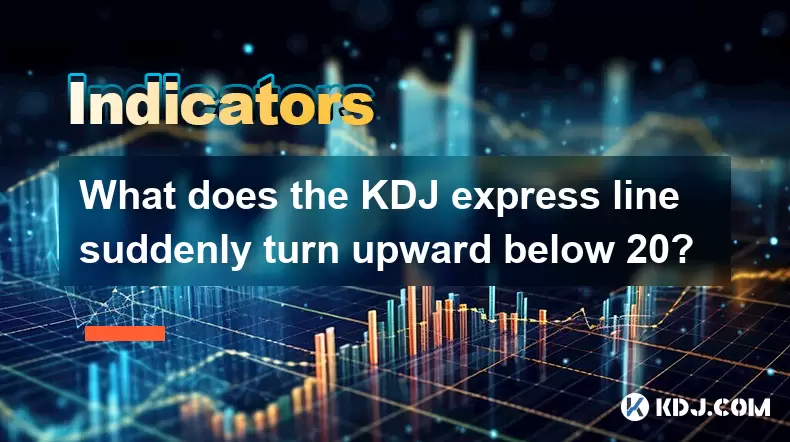
What does the KDJ express line suddenly turn upward below 20?
Jul 25,2025 at 11:49pm
Understanding the KDJ Indicator in Cryptocurrency TradingThe KDJ indicator is a momentum oscillator widely used in cryptocurrency trading to identify ...
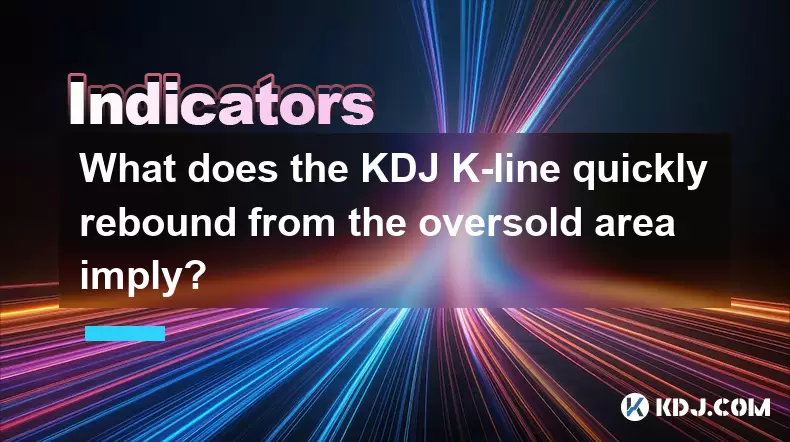
What does the KDJ K-line quickly rebound from the oversold area imply?
Jul 26,2025 at 12:21am
Understanding the KDJ Indicator in Cryptocurrency TradingThe KDJ indicator is a momentum oscillator widely used in cryptocurrency trading to identify ...

What does it mean that the KDJ indicator forms a double bottom at a low level?
Jul 25,2025 at 05:08pm
Understanding the KDJ Indicator in Cryptocurrency TradingThe KDJ indicator is a momentum oscillator widely used in cryptocurrency trading to identify ...

How to interpret when the KDJ indicator breaks through the 80 line when both volume and price rise?
Jul 26,2025 at 12:47am
Understanding the KDJ Indicator and Its ComponentsThe KDJ indicator is a momentum oscillator widely used in technical analysis within the cryptocurren...

What does it mean when the J value of KDJ suddenly falls below the 0 axis?
Jul 26,2025 at 12:01am
Understanding the KDJ Indicator in Cryptocurrency TradingThe KDJ indicator is a momentum oscillator widely used in cryptocurrency trading to identify ...

How to interpret that the KDJ D line is downward for a long time but the price is sideways?
Jul 25,2025 at 07:00pm
Understanding the KDJ Indicator and Its ComponentsThe KDJ indicator is a momentum oscillator widely used in cryptocurrency trading to assess overbough...

What does the KDJ express line suddenly turn upward below 20?
Jul 25,2025 at 11:49pm
Understanding the KDJ Indicator in Cryptocurrency TradingThe KDJ indicator is a momentum oscillator widely used in cryptocurrency trading to identify ...

What does the KDJ K-line quickly rebound from the oversold area imply?
Jul 26,2025 at 12:21am
Understanding the KDJ Indicator in Cryptocurrency TradingThe KDJ indicator is a momentum oscillator widely used in cryptocurrency trading to identify ...

What does it mean that the KDJ indicator forms a double bottom at a low level?
Jul 25,2025 at 05:08pm
Understanding the KDJ Indicator in Cryptocurrency TradingThe KDJ indicator is a momentum oscillator widely used in cryptocurrency trading to identify ...
See all articles

























































































